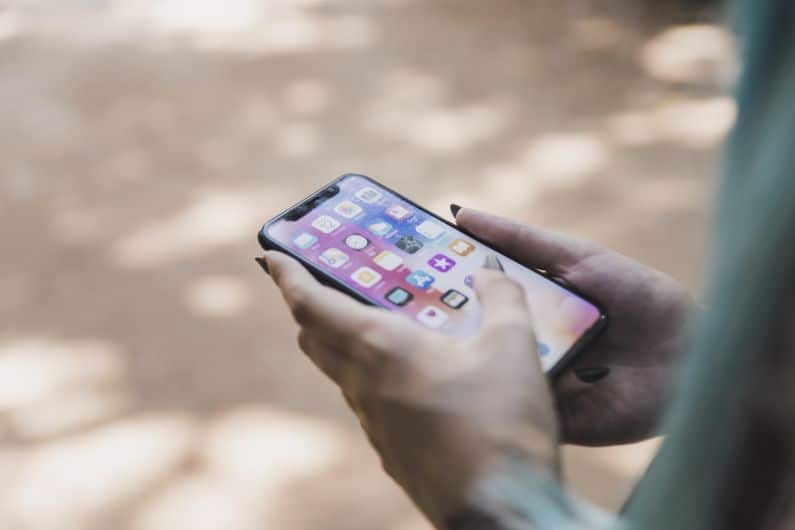It is undeniable that app stores are now saturated with mobile apps. But that doesn’t mean that everyone finds these apps useful. Take non-native English speakers, for example.
Sure, your mobile app can help solve their needs, but if there is no effective mobile app localization, they are less likely to download and use it.
Mind you, it is important to note that there are approximately 2.7 billion individuals across the globe who use smartphones.
Moreover, a significant portion of their time, around 90%, is dedicated to using various applications on their mobile devices.
In the first half of 2023, users worldwide downloaded a staggering 77 billion mobile apps.
This marked an increase of over three percent compared to the same period in 2022, during which approximately 74.4 billion mobile apps were downloaded by individuals all over the world.
Consider the wide array of applications available today, such as social media platforms, gaming apps, and instant messaging tools—the possibilities are endless.
If you happen to be a mobile app developer, it is crucial to take into account the concept of localization.
Why is this important? Well, there is a high probability that individuals who are not native English speakers would require access to your app.
In this article, we aim to guide you through seven indispensable factors that you should keep in mind when it comes to localizing your mobile application.
Mobile App Localization
Do Comprehensive Market Research
To localize an app effectively, you need to carry out comprehensive research on your market.
In your initial research, you might have noticed some gaps in your chosen niche or target market, and come up with ideas for how to address them.
When conducting this market research, consider factors that are relevant to your international users.
Let’s say you’re promoting an app that needs an internet connection.
Unfortunately, not everyone in developing countries can access a fast and reliable internet connection. This can have an impact on your app’s international success.
As an alternative, you could come up with an offline version of your app. You might even want to look at other app genres that are less affected by your market’s structural limitations.
Focus on the Most Common Languages
The next thing that you need to know when localizing your mobile app is which languages are most commonly used on the internet.
Once you have a clearer idea of these languages, you can hire a professional translation service to make your app available to as many people as possible.
According to Statista, the most common languages on the internet are:
- English – Higher than 58.8%
- Russian – Over 5%
- Spanish – Just under 5%
- French & German– 3.7%
- Japanese– 3%
Pick the Right Tools
The localization process comes with many challenges, and you want it to run as seamlessly as possible.
To help, you should utilize a localization and translation platform. Doing so allows you to automate the translation workflow easily.
There are a lot of advantages to a localization platform. For one, it lets you manage almost every aspect of the localization process, seamlessly.
It lets you coordinate with and manage your professional translators, and track your current progress.
Run Mobile App User Test
When designing an app, you need to plan well, anticipating potential problems that might arise beforehand.
Afterward, you need to test it. Look for users in the particular region you are aiming to target and let them test the program.
During this process, you may come across aspects of the app that don’t gel with your users. Find out what the issues they come across are and make the necessary changes until the app is enjoyable to use and appealing to customers.
Consider Cultural Differences
Having a culturally neutral design means you won’t necessarily have to adapt your app to every single market out there. Some references might be acceptable to one culture and yet might come across as too offensive to another.
Features that seem innocuous, such as shapes and colors, need to be chosen with great consideration when you are aiming at an international market.
For example, in Islam, the color green is related to paradise, whereas for many Chinese people the color means adultery.
Working with a professional localization service will help you to avoid offending potential clients or projecting the wrong impression of your company.
Look for a Safe and Secure Web Host
A cheap hosting provider doesn’t always mean quality. If you’re unlucky, you might have picked a web hosting company that isn’t safe and secure. It may even be incapable of supporting your bandwidth needs.
That’s why you must pick a hosting provider that serves your chosen locale.
Let’s say most of your users are Spanish, then it makes sense that the host you selected should have data centers in Spain. The same thing goes if most of your users are in North America.
You might want to go for hosting services that are either the US or Canada.
App Store Optimization
Finally, the last thing you need to do is let the world know that your app exists. It’s not enough that you come up with a great app, people need to use it! This explains why App Store Optimization is integral in app development.
For one, it helps prime your content for enhanced visibility at the app store.
Like its cousin, SEO (search engine optimization), ASO requires you to use the right search terms and optimize your content for every locale.
It goes without saying that localization is essential in mobile app development and design.
After all, 257 billions apps were downloaded per minute in 2023, and it is growing at a steady state.
This means that people worldwide, including non-native English speakers, can benefit from your app. It’s just a matter of ensuring that they will find it and enjoy using it.
The Significance of Mobile App Localization
Mobile app localization is a vital aspect of reaching a global audience. When it comes to mobile app localization, it goes beyond mere translation; it’s about adapting the app to resonate with the culture, language, and preferences of the target market.
This process ensures that users in different regions feel a genuine connection with the app, leading to increased user engagement, trust, and ultimately, greater success in the North American market and beyond.
By prioritizing mobile app localization, your translation company can effectively bridge the gap between diverse audiences and the apps they use, enhancing the user experience and boosting your global reach.
If you’re looking for a reliable translation and localization service, BeTranslated, with its skilled linguists and years of experience, could be the perfect choice for you.
If you have any questions, don’t hesitate to get in touch for more information or a free, no-obligation quote.





